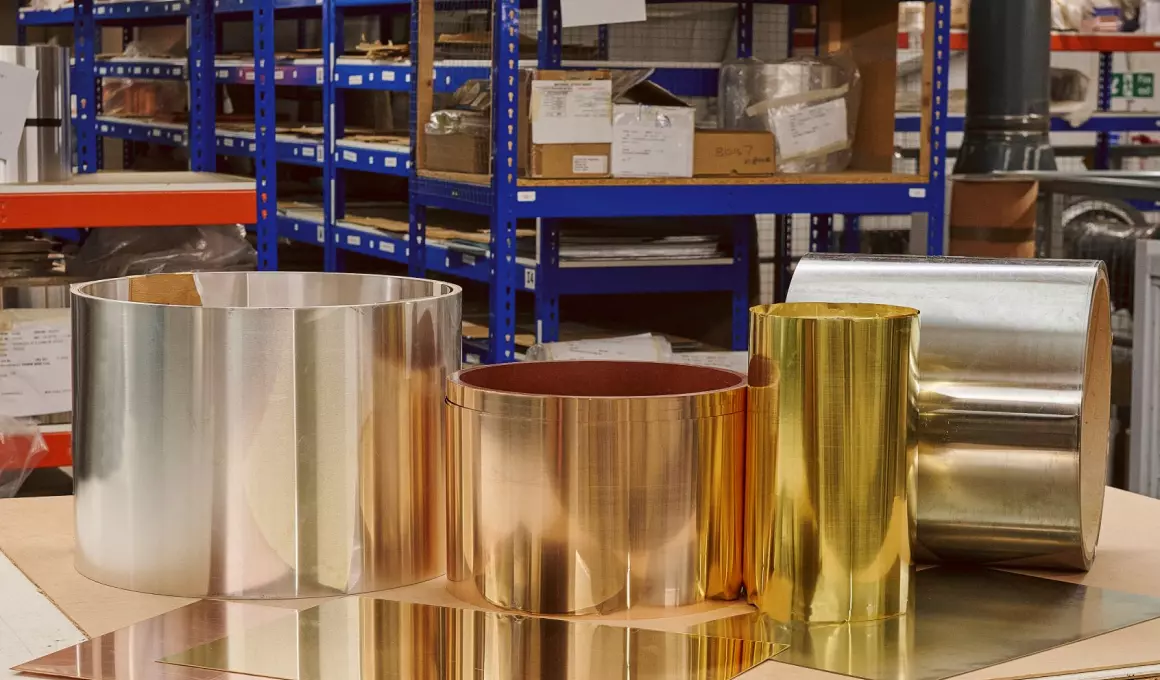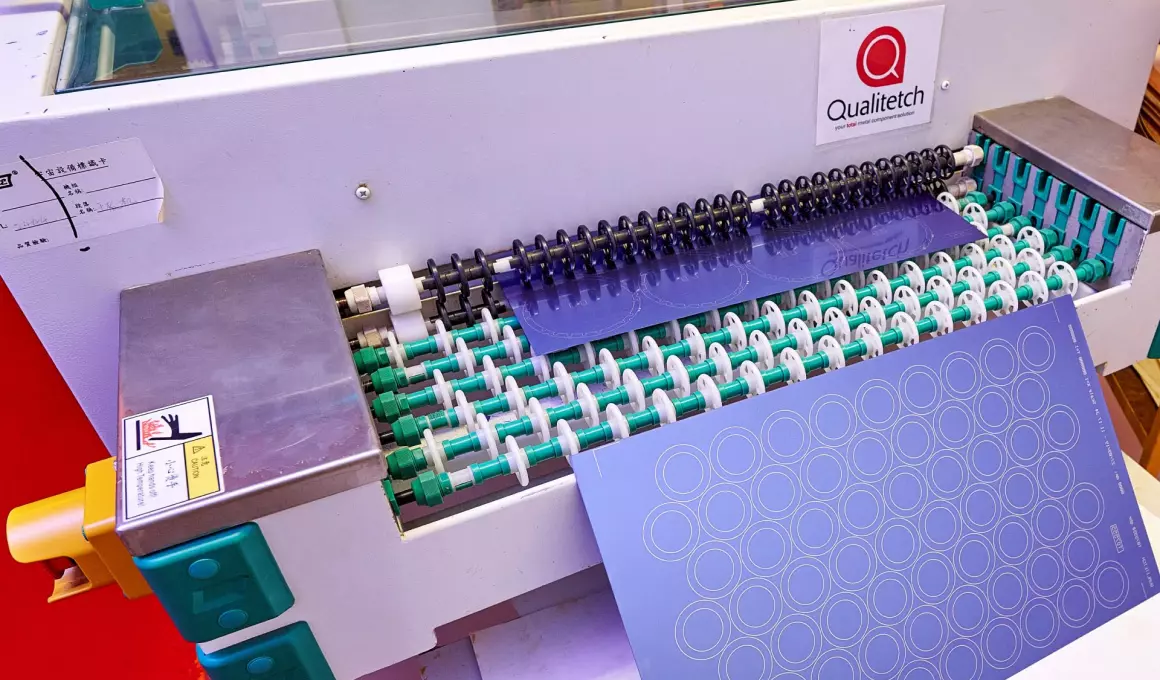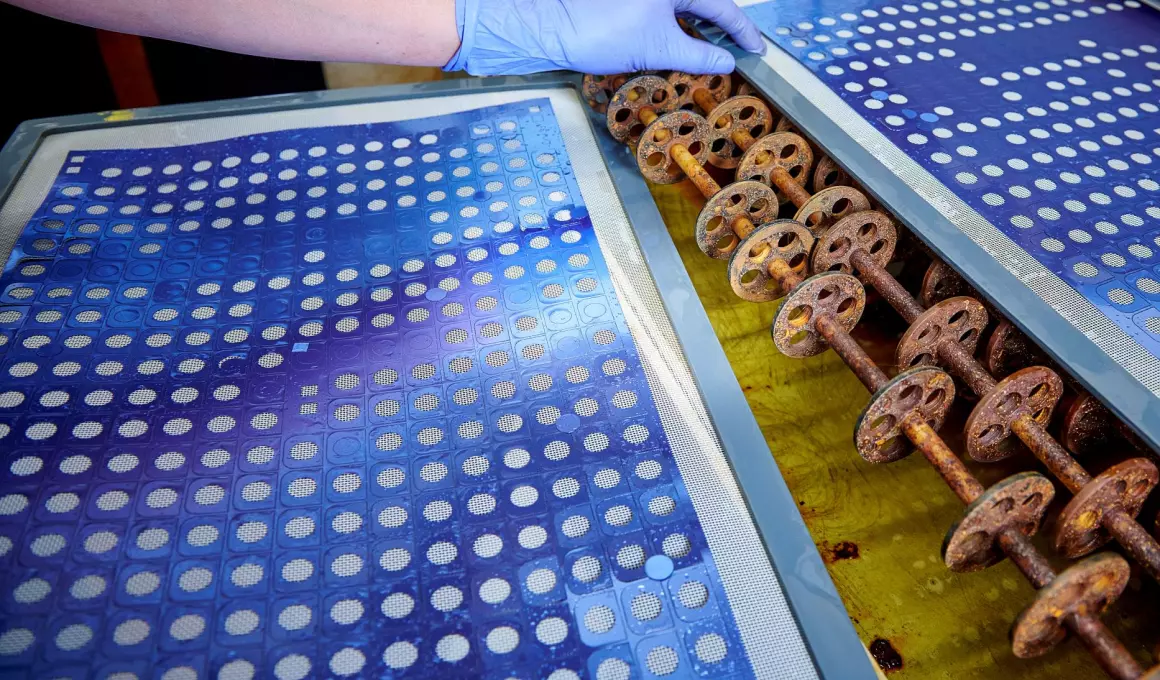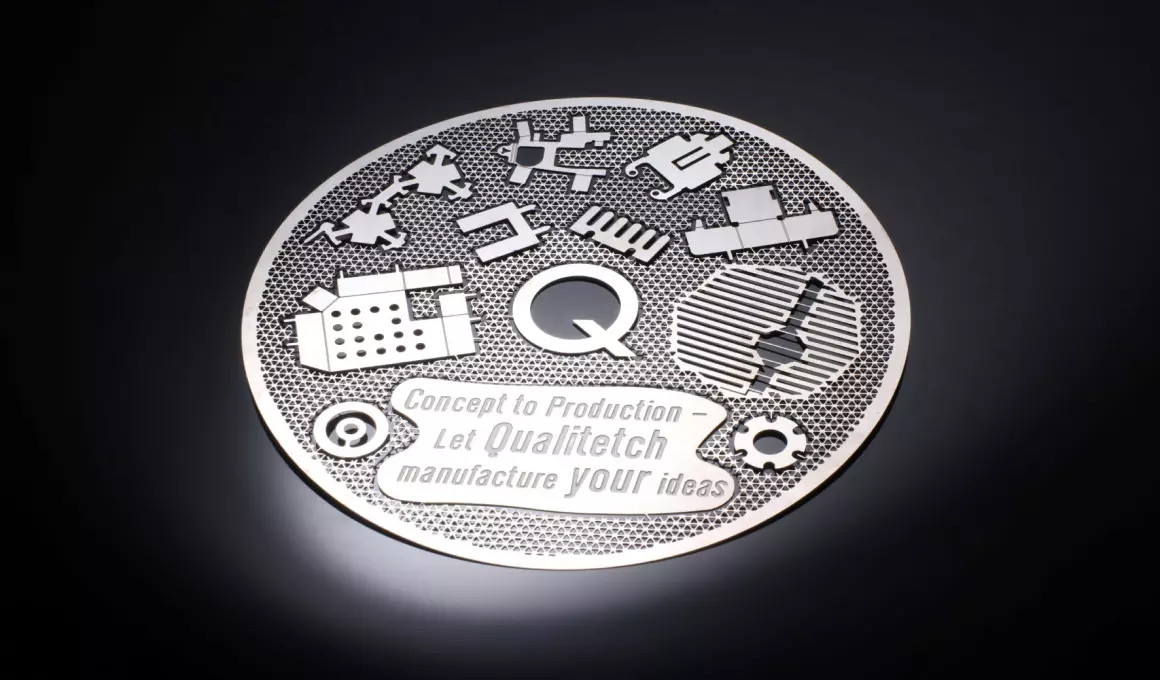© 2025 Qualitetch Ltd. Site by i3MEDIA
Your total metal component manufacturing solution
Through our Photo Chemical Etching process, the smallest and most complex designs are made possible such as electrical spring contacts, contact membranes, busbars, antennae and micro antennae, spring fingered contacts, heating elements and battery terminal as well as many other bespoke components to your own designs. The Copper retains all of its properties, as well as remaining burr and stress-free following our etching processes. At Qualitetch, we can offer your bespoke designs in a wide range of copper and Beryllium copper non-ferrous metal specifications and hardnesses as required.
Photo etching is a versatile and precise manufacturing method widely used for creating intricate metal components from copper. Copper, celebrated for its exceptional conductivity, malleability, and corrosion resistance, proves to be an excellent material for this process, enabling the production of intricate and high-quality parts for various industries.
Copper, a highly conductive metal, is favoured in numerous applications where electrical and thermal conductivity are critical. Through the etching process, copper's innate properties are leveraged to fabricate precise and intricate components with exceptional accuracy and consistency.
The process begins with a meticulously prepared copper sheet. The metal undergoes thorough cleaning to eliminate contaminants, ensuring a pristine surface for subsequent stages. A light-sensitive photoresist material is then uniformly applied to both sides of the copper sheet, forming a protective layer.
Using phototooling techniques, an exact image of the desired component is transferred onto the photoresist through exposure to UV light. This exposure induces a chemical reaction in the photoresist, hardening the areas corresponding to the intended design while leaving the rest of the protective layer unaffected.
The copper sheet, now shielded by the photoresist mask, is submerged in an etchant solution—usually an acid or chemical compound—where the unprotected areas of the metal are selectively dissolved. This precise chemical erosion selectively removes material, leaving intricately designed components on the copper sheet.
Chemical etching offers unparalleled precision and versatility, enabling the creation of intricate patterns, fine details, and complex geometries on copper. It allows for exceptionally tight tolerances, ensuring uniformity and precision across batches of components.
The advantages of employing photo chemical etching on copper are manifold. It offers a cost-effective means of producing intricate and complex designs without requiring expensive tooling or extensive machining. Its flexibility facilitates rapid prototyping and efficient mass production, catering to both small-scale and large-scale manufacturing needs.
Moreover, the process retains the inherent properties of copper, such as its excellent conductivity and corrosion resistance. This ensures that the final components maintain their conductivity and integrity, making them ideal for applications demanding reliable electrical performance in various environments.
Components manufactured through chemical etching of copper find widespread use across industries. These include intricate electrical contacts and connectors in electronics, heat sinks for thermal management in computing devices, precise meshes and screens in filtration systems, and specialized components in aerospace and automotive technologies.
In conclusion, photo etching of copper is a sophisticated manufacturing technique that harnesses the exceptional properties of this metal to produce precise, durable, and complex components. Its ability to maintain copper's inherent qualities while achieving intricate designs with exceptional precision makes it an indispensable method across diverse industries.
Due to the high conductivity of Copper, the metal is often used for electrical, automotive and transmission components. One of its primary uses is for wiring and harnesses, especially within the automotive industry where many electrical components are manufactured from copper using the photo etching process.
The metal is cleaned once your design has been finalised, and the metal sheet covered with UV sensitive photo-resist before printing your design. The metal is then taken through a chemical bath with ferric chloride, which acid etches the design from the metal sheet to produce your finished precision components.
Any trace of UV photo-resist remaining is stripped and removed once the etching process has been completed – and your chemically etched metal parts are taken to our QA technicians for final dimensional approval.
Qualitetch offers a quick and efficient turnaround, even for the highest of demands, with a high level of accuracy and quality. If you would like more information on the photo chemical etching process of copper, please contact the team on 01354 658787.
Our assembly line approach reduces manufacturing time and allows us to save time by cutting unnecessary steps out of the manufacturing process.
We have a dedicated team of fully qualified professionals who are on hand to deal with and complete assembly work requests from our customers.
We offer assembly, soldering and spot welding, bespoke packaging, and also many other specialist bespoke customer requirements that our clients may have.
The photo etching process produces metal components that are both stress-free and burr-free compared to more traditional manufacturing methods – ensuring that your end product is as both accurate and precise to your drawings.
 1
1
Qualitetch offer a huge range of metals for etching including: Stainless Steels, Carbon Spring Steels, Copper, Brass, Nickel Silver, Mild steel, Phosphor Bronze, Silver, Beryllium Copper, Aluminium, Nickel, Mu Metal, Alloy 42, Alloy 52 & Many Others.
 2
2
In order to ensure perfect parts every time, we need to clean the sheet metal to remove any impurities from the sheets surface before manufacturing your designs. This involves passing the metal sheets slowly through acid or alkaline solutions and rinsed prior to laminating, printing and developing.
 3
3
Metal cleaning involves passing the sheets slowly through conveyorised acid or alkaline solutions and rinsed clean prior to the lamination, printing and developing stages, depending on the sheet metal choice required.
 4
4
Once cleaned the metal sheets are coated with a UV sensitive photo resist, which melts to sheet in preparation for the printing process.
 5
5
The printing process involves us taking your chosen profile design and applying it to a two sided top and bottom acetate photo film mask, that we then print your design onto the UV sensitive photo resist.
 6
6
Once the metal sheet is printed with your chosen design, we then need to develop the sheet. This process effectively washes away the fine lines of the profile we are cutting, leaving raw metal track lines ready for the etching process to work it's magic very precisely.
 7
7
The etching process itself is an acid, usually ferric chloride, that effectively eats it's way through the metal at a known rate to ensure precision and targeted only in the areas you wish to remove, such as the profile track lines or other holes and features such a mesh. The rest of the sheet is masked by the UV photo sensitive blue resist, to protect the metal from the etchant until the parts are complete. This can be a very useful in a manufacturing process as the design can be very complex or include tabs or half etch fold bend lines at no added cost as you simply print your design rather than needing expensive machining time. Following an on-line dimensional check, all that is then required, is for us to strip and remove the UV photo sensitive resist coating and the parts are ready for full QA Inspection.
 8
8
At Qualitetch we offer various levels of QA inspection depending on our customers needs, as we supply both major blue chip businesses all over the world as well as smaller local businesses and anywhere in-between, as the photo etching process is very versatile. We have various automated optical equipment to ensure you parts are accurately supplied to your drawings. We also offer levels of inspection including 100% inspection, PPAP levels, batch inspection, First article inspection (FAIR) and bespoke customer inspection as required.
 9
9
Once the parts are fully inspected and passed they are ready to be packed and sent to the customer, or for additional processes such as plating, forming, soldering, spot-welding, machining, EDM wire erosion, heat treatment or any other bespoke services required, such as assembly.
The process of photo chemical etching requires a precise and stable production process, of which our production, compliance and maintenance teams ensure is achieved here at Qualitetch. We complete daily chemistry process checks throughout our multi stage etching production facility and run daily preventative maintenance programs on our manufacturing equipment to ensure the very best quality parts are produced.
You need a trusted manufacturing partner to provide you with precision photo etched metal components of the very best quality. That’s where we come in... Here at Qualitetch, we pride ourselves in offering world class manufacturing solutions to ensure your metal component parts are manufactured to the highest standards and levels of customer service you expect, meaning that we are always fully committed to delivering only the best overall service for metal components to our worldwide customers.
For more information about how our copper etching services can make a difference to your products, please give us a call today on 01354 658787.
Bipolar Plate manufacture & hydrogen fuel cells & Electrolysers through chemical etching
View the ServiceWe offer a wide range of engineering solutions and process methods to suit your project needs.
View the ServiceStainless steel photo chemical etching is one of the most common materials we etch.
View the ServiceSilver is one of the most common precious metals around the world
View the ServiceSteel is one of the most popular metal materials to use in manufacturing.
View the Service
